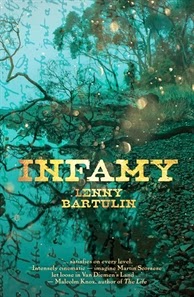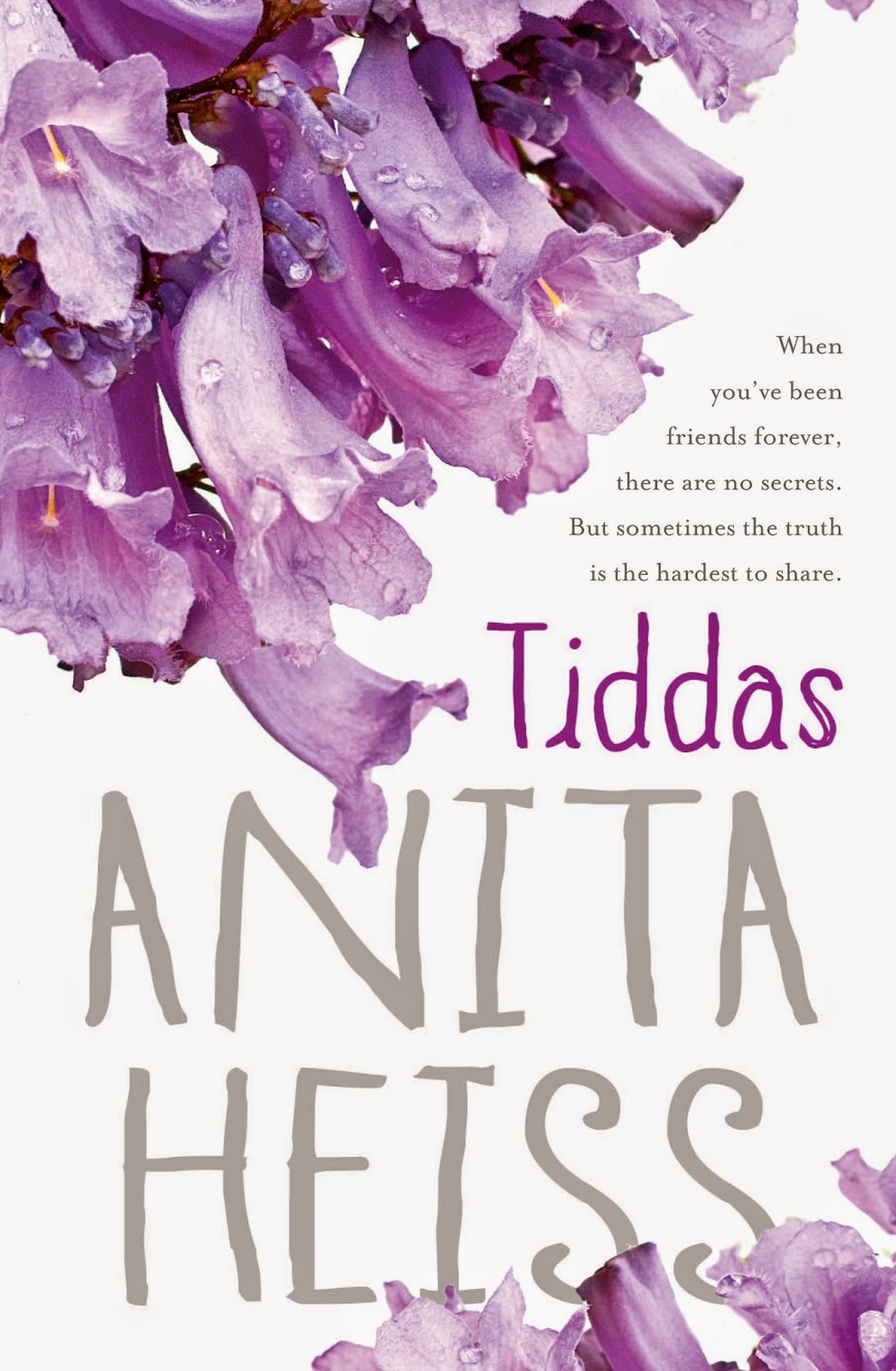Ten book Tuesday...Reconciliation Week
Sutherland Shire Libraries
Tuesday, May 27, 2014
Its Reconciliation week 27 May-3 June. The theme for 2014 is Lets walk the talk.
What is National Reconciliation week?
"a time for all Australians to learn about our shared histories, cultures and achievements and explore how each of us can join the national reconciliation effort" NWA website.
Check out these ten books, written by indigenous authors, all available from the Library.
 Grace beside me by Sue Mc Pherson
Grace beside me by Sue Mc PhersonLife is not ordinary for Fuzzy Mac, but it should be. What could possibly be exciting about growing up with her nan and pop in a small country town? Rivalry, romance, Nan's mysterious premonitions, an encounter with a particularly unusual kind of ghost and the mix of characters who live in this high-country town make Fuzzy's life far from boring.

A most peculiar act by Marie Munkara
The story follows the trials and tribulations of Sugar, a 16 year-old Aboriginal fringe-camp dweller. Set in Darwin during the Japanese bombing raids, we meet characters such as: Horatio Humphris (Horrid Hump), Chief Protector of Aborigines, teetotaller and 42 year old virgin; Ralphie Brown, who has the unedifying honour of being the only public servant to ever be sacked; Drew Hepplewaite, redneck racist and female patrol officer armed with balls of steel; and the Administrator's wife, Penelope, who has a fetish for anything oriental. Then there's Sugar's mate Nig Nog, who teaches Sugar a few useful tricks of the "trade" while they do time at the Half-Caste Compound; Fuel Drum's suspicious death at the hands of his six-month-old granddaughter, Honey; and Horseshoe with his wayward and slutty wife, Brumby. With the Aboriginal Ordinances Act and the 'White Australia' policy set as a backdrop, Sugar's resistance to assimilation and the attempts by Horrid Hump and his henchmen to enforce it becomes a protracted battle that ends at the Christmas party from Hell. Interspersed with illicit affairs, stolen children, leprosy and "fucking foreigners," this story sees Sugar and her oppressors finally meet on a level playing field that none of them ever expected - a Japanese bombing raid.

Calypso Summer by Jared Thomas
Calypso Summer is a story told by Calypso, a young Nukunu man, fresh out of high school in Rastafarian guise. After failing to secure employment in sports retail, his dream occupation, Calypso finds work at the Henley Beach Health Food shop where his boss pressures him to gather Aboriginal plants for natural remedies. Growing up in urban Adelaide and with little understanding of his mother's traditional background, Calypso endeavours to find the appropriate native plants. This leads him to his Nukunu family in Port Augusta and the discovery of a world steeped in cultural knowledge.

Ruby Moonlight by Ali Cobby Eckermann
Ruby Moonlight, a novel of the impact of colonisation in mid north South Australia around 1880. The main character, Ruby, refugee of a massacre, shelters in the woods where she befriends an Irishman trapper. The poems convey how fear of discovery is overcome by the need for human contact, which, in a tense unravelling of events, is forcibly challenged by an Aboriginal lawman. The natural world is richly observed and Ruby's courtship is measured by the turning of the seasons.
 Us mob Walawurru by David Spillman and Lisa Wilyuka
Us mob Walawurru by David Spillman and Lisa WilyukaUs Mob Walawurru takes place in the 1960s in an Aboriginal community in Central Australia. Told through the eyes of Ruby, a Luritja girl, the story revolves around the new zsilver bullety school and the cultural challenges faced by both the community members and the well-meaning schoolteacher. Ruby tells of her own awakening and she experiences some of the momentous events of the time, including the 1967 Aboriginal citizenship referendum and the buy-back of pastoral leases. With perception and humor, this ground-breaking novel deals with issues of culture, ownership, and reconciliation that are just as pertinent today, while providing insight into the cultural challenges faced by Aboriginal communities and their non-Aboriginal people.

Infamy by Lenny Bartulin
Taking a Deadwood meets Cormac McCarthy-style approach to recreating history, Alluvium tells the story of William Burr, former English soldier of fortune who is lured to the colony of Tasmania by Lieutenant Arthur Phillip as a bounty hunter, charged to find and capture a notorious escaped felon, Brown George Coyne, who has established a camp in the bush populated with desperates, renegade Aborigines and other escaped convicts. As Burr ventures further into the wilderness on his trail, Coyne grows increasingly mad in a Colonel Kurtz kind of way and declares himself king of the frontier, growing wealthier by the day from ambushes and raiding party forays into Hobart. With most of the armed forces concerned with clearing the land of its aboriginal population, Coyne's influence spreads and threatens to destabilise the entire colony. Coyne's men take a wounded Burr hostage, along with the wife of a corrupt army officer, and together they must try to escape the heart of darkness and warn Phillip that is colony is on the brink of anarchy. A steamy love story, breathtaking action, cut-throat villains and corrupt and deadly officials galore, this is a brilliant and hugely enjoyable recreation of Tasmanian history by a local who is not only a terrific storyteller but also a skilled and evocative writer. It's Kate Grenville meets Cormac McCarthy in a rollicking, galloping tale that's also sensitive and faithful to history.
 Yira Boornak Nyining by an old story retold by Kim Scott, Hazel Brown Roma Winmar and the Wirlomin Noongar Language and Stories Project with artwork by by Anthony (Troy) Roberts.
Yira Boornak Nyining by an old story retold by Kim Scott, Hazel Brown Roma Winmar and the Wirlomin Noongar Language and Stories Project with artwork by by Anthony (Troy) Roberts.Presented bilingually in English and Aboriginal Noongar language text, Yira Boornak Nyininy is an Indigenous Australian story about forgiveness and friendship. Left stranded in a tree by his wife, a Noongar man has to rely on his Wadjela friend to help him back down. Yira Boornak Nyininy came from the wise and ancient language of the First People of the Western Australian south coast - the Noongar people. Inspired by a story told to the American linguist Gerhardt Laves around 1931, Yira Boornak Nyininy has been workshopped in a series of community meetings as a part of the "Wirlomin Noongar Language & Stories Project" to revitalize an endangered language. This story is written in old Noongar, along with a literal English translation, as well as English prose styled by Kim Scott.

The swan book by Alexis Wright
This book is set in the future, with Aboriginals still living under the Intervention in the north, in an environment fundamentally altered by climate change. It follows the life of a mute teenager called Oblivia, the victim of gang-rape by petrol-sniffing youths, from the displaced community where she lives in a hulk, in a swamp filled with rusting boats, and thousands of black swans driven from other parts of the country, to her marriage to Warren Finch, the first Aboriginal president of Australia, and her elevation to the position of First Lady, confined to a tower in a flooded and lawless southern city. The Swan Book has all the qualities which made Wright's previous novel, Carpentaria, a prize-winning best-seller. It offers an intimate awareness of the realities facing Aboriginal people; the wild energy and humour in her writing finds hope in the bleakest situations; and the remarkable combination of storytelling elements, drawn from myth and legend and fairy tale.
 Dark Emu: Black seeds: Agriculture or accident? by Bruce Pascoe
Dark Emu: Black seeds: Agriculture or accident? by Bruce PascoeDark Emu puts forward an argument for a reconsideration of the hunter-gatherer tag for precolonial Aboriginal Australians. The evidence insists that Aboriginal people right across the continent were using domesticated plants, sowing, harvesting, irrigating and storing-behaviours inconsistent with the hunter-gatherer tag. Gerritsen and Gammage in their latest books support this premise but Pascoe takes this further and challenges the hunter-gatherer tag as a convenient lie. Almost all the evidence comes from the records and diaries of the Australian explorers, impeccable sources.
 Tiddas by Anita Heiss
Tiddas by Anita HeissFive women, best friends for decades, meet once a month to talk about books … and life, love and the jagged bits in between. Dissecting each other’s lives seems the most natural thing in the world – and honesty, no matter how brutal, is something they treasure. Best friends tell each other everything, don’t they? But each woman carries a complex secret and one weekend, without warning, everything comes unstuck. Izzy, soon to be the first Black woman with her own television show, has to make a decision that will change everything. Veronica, recently divorced and dedicated to raising the best sons in the world, has forgotten who she is. Xanthe, desperate for a baby, can think of nothing else, even at the expense of her marriage. Nerida, so successful at writing other people’s stories, is determined to blot out her own. Ellen, footloose by choice, begins to question all that she’s fought for. When their circle begins to fracture and the old childhood ways don’t work anymore, is their sense of sistahood enough to keep it intact? How well do these tiddas really know each other?